
A Letter to Three Wives is a 1949 American romantic drama that tells the story of a woman who sends a letter to three women, saying she has left town with one of their husbands without revealing which one. It stars Jeanne Crain, Linda Darnell, Ann Sothern, Paul Douglas, Kirk Douglas, and Jeffrey Lynn. Thelma Ritter as "Sadie" and Celeste Holm have key supporting roles.

Elizabeth Ruth Grable was an American actress, pin-up girl, dancer, model and singer.

Rita Hayworth was an American actress. She achieved fame in the 1940s as one of the top stars of the Golden Age of Hollywood, and appeared in 61 films in total over 37 years. The press coined the term "The Love Goddess" to describe Hayworth after she had become the most glamorous screen idol of the 1940s. She was the top pin-up girl for GIs during World War II.

Victor John Mature was an American stage, film, and television actor who was a leading man in Hollywood during the 1940s and 1950s. His best known film roles include One Million B.C. (1940), My Darling Clementine (1946), Kiss of Death (1947), Samson and Delilah (1949), and The Robe (1953). He also appeared in many musicals opposite such stars as Rita Hayworth and Betty Grable.
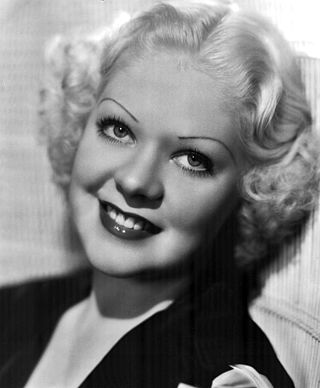
Alice Faye was an American actress and singer. A musical star of 20th Century-Fox in the 1930s and 1940s, Faye starred in such films as On the Avenue (1937) and Alexander's Ragtime Band (1938). She is often associated with the Academy Award–winning standard "You'll Never Know", which she introduced in the 1943 musical film Hello, Frisco, Hello.
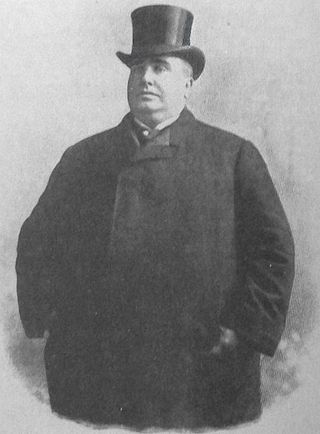
Paul Dresser was an American singer, songwriter, and comedic actor of the late nineteenth and early twentieth centuries. Dresser performed in traveling minstrel and medicine-wagon shows and as a vaudeville entertainer for decades, before transitioning to music publishing later in life. His biggest hit, "On the Banks of the Wabash, Far Away" (1897), was the best selling song of its time. Although Dresser had no formal training in music composition, he wrote ballads that had wide appeal, including some of the most popular songs of the era. During a career that spanned nearly two decades, from 1886 to 1906, Dresser composed and published more than 150 songs. Following the success of "Wabash", many newspapers compared Dresser to popular composer Stephen Foster. "On the Banks of the Wabash, Far Away" became the official song of Indiana in 1913. The Paul Dresser Birthplace in Terre Haute is designated as a state shrine and memorial. Dresser was inducted into the Songwriters Hall of Fame in 1970.

"On the Banks of the Wabash, Far Away" was among the best-selling songs of the 19th century, earning over $100,000 from sheet-music revenues. Written and composed by American songwriter Paul Dresser, it was published by the Tin Pan Alley firm of Howley, Haviland and Company in October 1897. The lyrics of the ballad reminisce about life near Dresser's childhood home by the Wabash River in Indiana, United States. The song remained popular for decades, and the Indiana General Assembly adopted it as the official state song on March 14, 1913. The song was the basis for a 1923 film of the same title. Its longtime popularity led to the emergence of several lyrical versions, including an 1898 anti-war song and a Swedish version that was a number-one hit.

Ilse Werner was a Dutch-German actress, singer, and musical whistler.
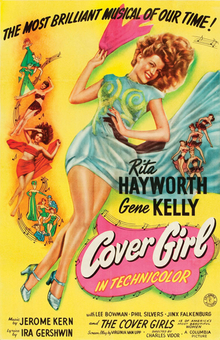
Cover Girl is a 1944 American musical romantic comedy film directed by Charles Vidor, and starring Rita Hayworth and Gene Kelly. The film tells the story of a chorus girl given a chance at stardom when she is offered an opportunity to be a highly paid cover girl. It was one of the most popular musicals of the war years.
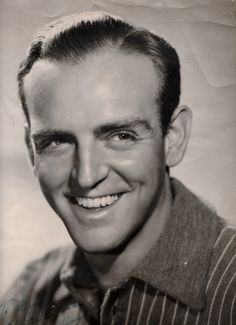
Hermes Pan was an American dancer and choreographer, principally remembered as Fred Astaire's choreographic collaborator on the famous 1930s movie musicals starring Astaire and Ginger Rogers. He worked on nearly two dozen films and TV shows with Astaire. He won both an Oscar and an Emmy for his dance direction.
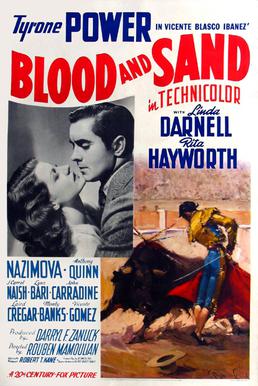
Blood and Sand is a 1941 American romantic Technicolor film starring Tyrone Power, Linda Darnell, Rita Hayworth and Nazimova. Directed by Rouben Mamoulian, it was produced by 20th Century Fox and was based on the 1908 Spanish novel Blood and Sand by Vicente Blasco Ibanez. The supporting cast features Anthony Quinn, Lynn Bari, Laird Cregar, J. Carrol Naish, John Carradine and George Reeves. Rita Hayworth's singing voice was dubbed by Gracilla Pirraga.
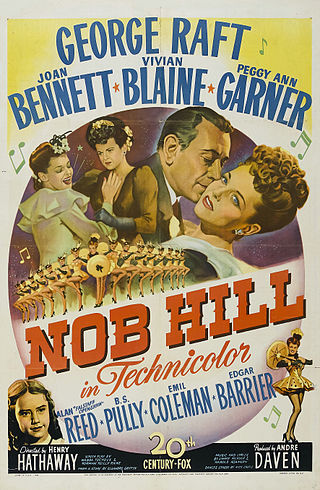
Nob Hill is a 1945 Technicolor film about a Barbary Coast, San Francisco, United States saloon keeper, starring George Raft and Joan Bennett. Part musical and part drama, the movie was directed by Henry Hathaway. It remains one of Raft's lesser known movies even though it was a big success, in part because it was a musical.
My Gal Sal is a 1942 American musical film.
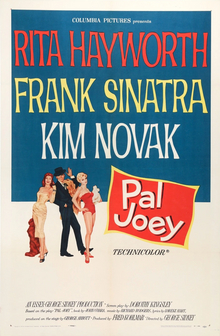
Pal Joey is a 1957 American musical comedy film directed by George Sidney, loosely adapted from the Rodgers and Hart musical play of the same name, and starring Rita Hayworth, Frank Sinatra, and Kim Novak.

Martha Mears was a radio and film contralto singer, active from the 1930s to 1950s. She introduced in films original songs which have become standards, including "Long Ago ", and "My Foolish Heart".

Alleen Mae Beller, also known as Sally Starr was a prominent 1950s and 1960s celebrity television personality. Using a cowgirl persona, she appealed to local TV audiences of several generations of children through American radio, Broadway stage, movies and as a recording artist for more than sixty years. Fans remained loyal in the Philadelphia metropolitan area, and embraced her cowgirl personality as part of their own family identity, and sometimes referred to her as "Aunt Sally" or "Our Gal Sal."
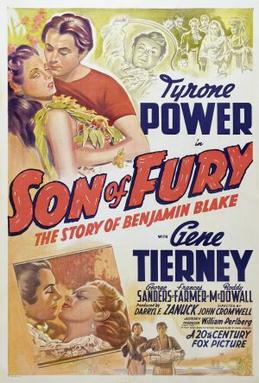
Son of Fury: The Story of Benjamin Blake is a 1942 American south seas adventure film directed by John Cromwell and starring Tyrone Power. The film was adapted from Edison Marshall's 1941 historical novel Benjamin Blake. It is notable as the last film Frances Farmer appeared in before her legal problems and eventual commitment to psychiatric hospitals until 1950.

Four Jills in a Jeep is a 1944 American comedy-drama musical film starring Kay Francis, Carole Landis, Martha Raye and Mitzi Mayfair as themselves, reenacting their USO tour of Europe and North Africa during World War II.

Hollywood Cavalcade is a 1939 American film featuring Alice Faye as a young performer making her way in the early days of Hollywood, from slapstick silent pictures through the transition from silent to sound.
A Saint She Ain't is a musical with lyrics written by Dick Vosburgh and music by Denis King. The piece is inspired by Le Cocu Imaginaire, by Molière, but the story has been updated to an American port in the 1940s. The characters are based on famous performers of the era, such as Jimmy Durante, Mae West, W.C. Fields, and Rita Hayworth. A Saint She Ain't depicts a young couple who, receiving bad information, each believe that the other is unfaithful. The musical deals with the repercussions of love, jealousy, impulsiveness, and deception.


















